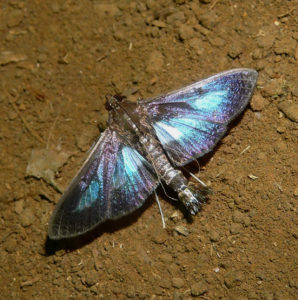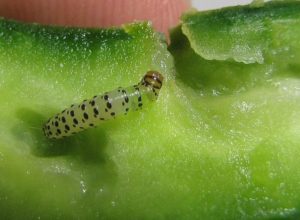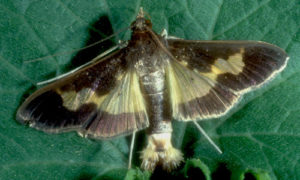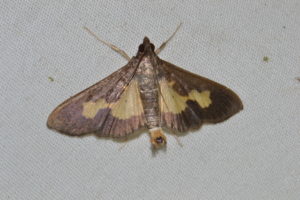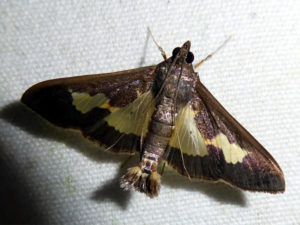Pickleworm Moth (Diaphania nitidalis)
The pickleworm moth is a member of the family of grass moths, known for being a major pest to squash plants in the United States.
Content.eol.org
Scientific Classification
- Family: Crambidae
- Genus: Diaphania
- Scientific Name: Diaphania nitidalis
Description and Identification
Pupa
The pupae are light to dark-brown, tapering off at both ends, being 13mm long, and 4 mm wide. Pupation takes place for 8-10 days, with the mature larva using dead leaves as a cocoon, held together weakly with thin strands of silk.
Adult Moth
Sexual Dimorphism: Present but not prominent.
Color and Appearance:
A signature tuft of anal hair that looks like a paintbrush is present in both sexes. The legs of this moth are white.
Forewing: When the wings are opened, they are seen to be an iridescent purple-brown color, with a translucent yellow patch spreading to the hindwing. When the wings are closed, the colors and patterns remain the same.
Hindwing: When the wings are opened, similar to the forewings, an iridescent purple-brown color is observed, alongside a translucent yellow patch shared with the forewing, ending at the border. When the wings are closed, there is no change in the color and pattern.
Average wingspan: 2.5-3.2 cm
Flight pattern: Erratic
Season: August – October
Egg
Eggs are initially white, turning yellow in about 24 hours from being laid. Minute in size, they measure 0.4 – 0.6 mm in width and 0.8 mm length.
Adult moths lay the eggs a few days after pupation, in a cluster of about 2-7 on the growing parts of the plants like flower, leaf buds, and stems.
Quick Facts
| Distribution | North America; including Maine to Florida, and the area west to Nebraska and Texas |
| Habitat | Warm, humid, and tropical regions |
| Lifespan of Adults | Not recorded |
| Host Plants | Cucurbit plants like squash, cucumbers, and melons. Sometimes pumpkins and cantaloupes are attacked as well |
| Adult Diet | Does not feed |
Scientific Classification
- Family: Crambidae
- Genus: Diaphania
- Scientific Name: Diaphania nitidalis

